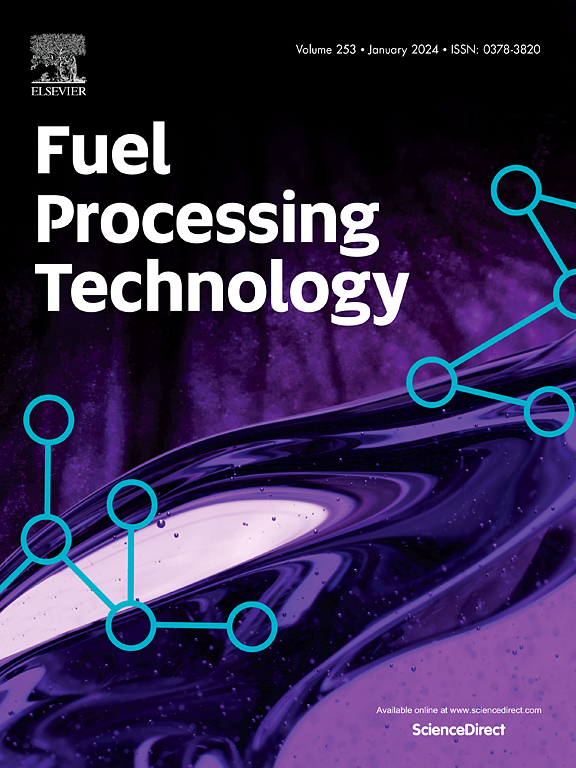Combustion characterization of benzene-doped, hydrogen-rich coke oven gas surrogate mixtures: H2/CH4/CO/N2/CO2
IF 7.7
2区 工程技术
Q1 CHEMISTRY, APPLIED
引用次数: 0
Abstract
This experimental study investigates the effects of benzene doping on the combustion and emission characteristics of hydrogen-rich, coke oven gas (COG) surrogate mixture, H2/CH4/CO/N2/CO2, to be called hereafter as COGb to distinguish it from and compare it with a different coke oven surrogate mixture, H2/CH4/CO, to be called hereafter as COGa. Unlike COGa mixture that includes only the major components of the industrial-grade coke oven gas composition, COGb also considers the minor components for the sake of a comprehensive understanding of the chemical and physical phenomena occurring at an industrial scale when burning coke oven gas mixtures. The purpose of benzene (C6H6) – as representative of benzol (BTX) – doping of the COG mixtures is to investigate the direct and indirect impact of aromatic compounds on NOx formation during the hydrogen-rich combustion process. Different levels of benzene (C6H6) doping (up to 5 % v/v) of industrial-grade, H2-rich COGb flames in a semi-industrial scale furnace under varying stoichiometric conditions allowed for collecting extensive data on temperature, exhaust emission, and chemiluminescence signature of important chemical radical species including OH⁎ and CH⁎. The results highlight a benzene-driven, three-way interaction between flame temperature, NO formation, and soot inception in the coke oven gas flames.
掺苯富氢焦炉气体H2/CH4/CO/N2/CO2替代混合物的燃烧特性
本实验研究了苯掺杂对富氢焦炉煤气(COG)替代混合物H2/CH4/CO/N2/CO2(以下简称COGb)燃烧和排放特性的影响,以区分并与不同的焦炉替代混合物H2/CH4/CO(以下简称COGa)进行比较。与COGa混合物只包括工业级焦炉气体成分的主要成分不同,COGb还考虑了次要成分,以便全面了解在工业规模上燃烧焦炉气体混合物时发生的化学和物理现象。以苯(C6H6) -为代表的苯(BTX) -掺杂COG混合物的目的是研究富氢燃烧过程中芳香族化合物对NOx生成的直接和间接影响。在半工业规模的炉中,在不同的化学计量条件下,工业级富含h2的COGb火焰中掺杂不同水平的苯(C6H6)(高达5% v/v),可以收集大量关于温度、废气排放和重要化学自由基(包括OH和CH)的化学发光特征的数据。结果表明,在焦炉煤气火焰中,火焰温度、NO形成和烟尘形成之间存在苯驱动的三向相互作用。
本文章由计算机程序翻译,如有差异,请以英文原文为准。
求助全文
约1分钟内获得全文
求助全文
来源期刊

Fuel Processing Technology
工程技术-工程:化工
CiteScore
13.20
自引率
9.30%
发文量
398
审稿时长
26 days
期刊介绍:
Fuel Processing Technology (FPT) deals with the scientific and technological aspects of converting fossil and renewable resources to clean fuels, value-added chemicals, fuel-related advanced carbon materials and by-products. In addition to the traditional non-nuclear fossil fuels, biomass and wastes, papers on the integration of renewables such as solar and wind energy and energy storage into the fuel processing processes, as well as papers on the production and conversion of non-carbon-containing fuels such as hydrogen and ammonia, are also welcome. While chemical conversion is emphasized, papers on advanced physical conversion processes are also considered for publication in FPT. Papers on the fundamental aspects of fuel structure and properties will also be considered.
 求助内容:
求助内容: 应助结果提醒方式:
应助结果提醒方式:


